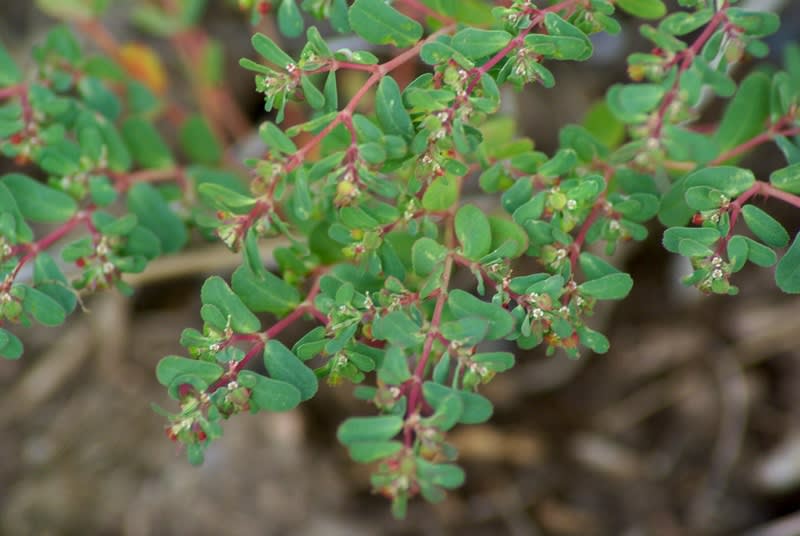Thyme-leaf sandmat, Thyme-leaf spurge, Mat spurge
Euphorbia serpyllifolia

🌿 Morphology
🌞 Growing conditions
🌍 Origin and family
🌾 Uses
Warning: Despite the care taken in writing this sheet, it is essential to cross-reference sources before using or consuming any plant. When in doubt, consult a qualified professional
Permaculture uses
Euphorbia serpyllifolia is primarily a ground cover. Some Euphorbia species have medicinal uses, but this specific species is not widely recognized for edible or medicinal properties. It can be used for erosion control in dry areas. Its ability to thrive in poor soils makes it a good candidate for soil stabilization in disturbed sites. Caution: the milky sap of Euphorbia species can be irritating to the skin and eyes.
Permapeople description
A low-growing annual plant with small, rounded leaves. It is commonly found in sandy soils.
Botanical description
Euphorbia serpyllifolia, commonly known as thyme-leaf sandmat, is an annual flowering plant in the spurge family (Euphorbiaceae). It is a low-growing plant, often forming mats, with small, rounded or oval leaves that resemble thyme. The leaves are typically green but can have reddish hues. The stems are slender and branching. The flowers are small and inconspicuous, typical of Euphorbia species, with no petals but colorful bracts. The fruit is a small capsule containing seeds. The plant exudes a milky sap when damaged. It is native to North America.
Companion planting
Information on specific companion planting for Euphorbia serpyllifolia is limited. As a ground cover, it may compete with shallow-rooted plants for resources. Its drought tolerance makes it a possible companion for other drought-tolerant species. Avoid planting near sensitive crops due to the potentially irritating sap.
Propagation methods
Propagation is typically by seed. Seeds can be sown directly in the ground in spring after the last frost. Self-seeding is also common.
History and traditions
While specific historical uses of Euphorbia serpyllifolia are limited, other Euphorbia species have been used traditionally for medicinal purposes by various cultures. However, due to the potential toxicity of some Euphorbia species, traditional uses should be approached with caution.
Usage calendar
Flowering occurs primarily in summer and fall. Seed maturation and dispersal typically follow flowering. Planting is best done in spring.
